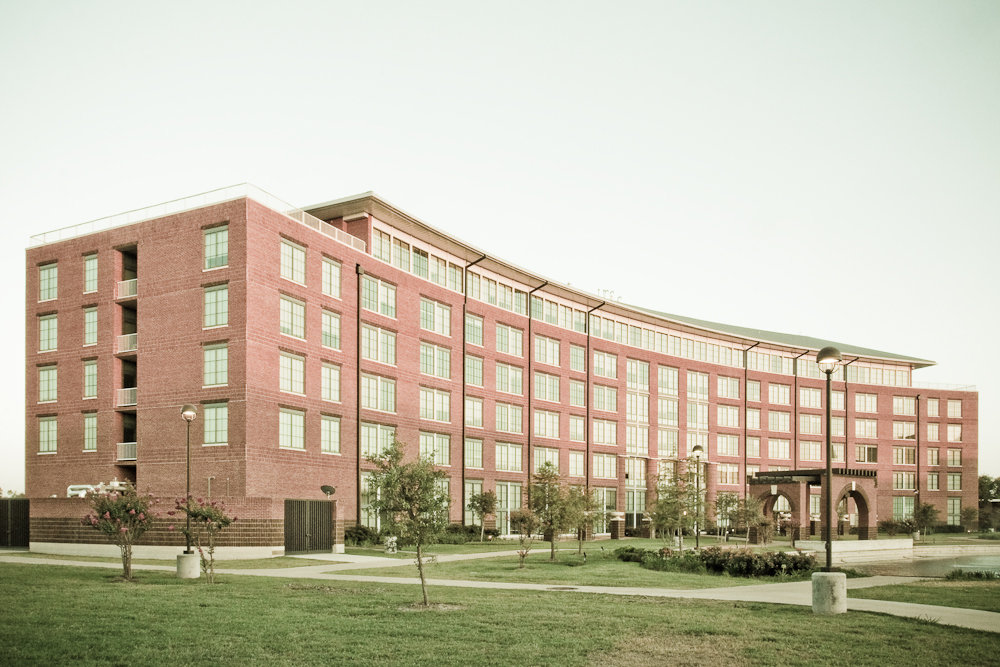

Houston Baptist University (commonly abbreviated HBU) is a private Baptist institution founded in 1960. It is located in Greater Sharpstown in Houston, Texas near the Southwest Freeway.
Houston Baptist College was created by action of the Baptist General Convention of Texas on November 15, 1960 culminating many years of work and study. The aim of the College founders was the establishment of a Christian college of the highest order in the city of Houston that stressed quality of life as well as quality of learning.
In 1952, the Union Baptist Association authorized a committee to study the possibility of locating a Baptist college in Houston. With the assistance and encouragement of the Education Commission of the Baptist General Convention of Texas, the committee conducted a survey in 1955. Acting upon information obtained with the endorsement of the Education Commission, the Association approved the concept of establishing a new college. In 1956, the Executive Board of the Baptist General Convention of Texas approved a recommendation that Houston Baptists be given assurance that the Convention would support such a college when the College Committee of the Union Baptist Association had succeeded in acquiring both (1) a satisfactory site for a campus of at least one hundred acres, and (2) a minimum corpus of at least three million dollars. Of this sum, one and one-half million dollars would constitute a nucleus endowment fund; one and one-half million dollars would be designated for a physical plant. The Union Baptist Association accepted these conditions and endorsed the requirements set up by the state Baptist convention.
In 1957, a Houston land developer, Frank Sharp, offered to sell Union Baptist Association 390 acres (1.6 km2) in southwest Houston for the construction of a college. The Board of Governors of Rice University agreed to lend most of the money needed with the land as collateral. To complete the funding, twenty-five business men, since called “founders”, pledged to be responsible for $10,000 each. Therefore, by 1958, a campus site of 196 acres (0.79 km2) was acquired in southwest Houston, and, in 1960, the initial financial goal of repaying the loan was reached as a result of a campaign among the churches. Much of the land was used to build for-profit housing, much of which included the development that will later become the seeds for the Sharpstown community, and the Memorial-Hermann Southwest hospital, land that is still property of HBU.
In 1960, the Baptist General Convention of Texas in its annual session at Lubbock, Texas elected the first Board of Trustees. This board in session in Houston, Texas on November 15, 1960 approved and signed the College charter. The next day, this charter was ratified and recorded with the Secretary of State in Austin. The way was then cleared to select administrative officers, develop a suitable physical plant, and design an appropriate academic program. Dr. W. H. Hinton began service as the first President of the College on July 1, 1962.
The College opened in September 1963 with a freshman class of 193 students, a cluster of new buildings, and a teaching staff of thirty faculty. A new class was added each year until the College attained a four-year program in 1966-67. By then, the full- time faculty had grown to fifty-four members, serving an enrollment of approximately nine hundred undergraduate students. Among the faculty was the historian Marilyn McAdams Sibley, who received her Ph.D. from Rice University.
A wide variety of undergraduate majors are offered and pre-professional programs range from Biblical Languages to Nursing. All classes are faculty-taught and more than half the classes have fewer than 20 students. HBU also offers graduate programs in business, Christian counseling, psychology, the liberal arts, and education.
The Reuben & Rebecca Bates Philips Residence Colleges for Men and Women are two separate residence hall facilities, with each serving one gender. The Lakehouse the largest single residential building on campus that houses both genders on opposing sides of the building. Husky Village, seven apartment buildings with various layouts, are usually reserved for upperclassmen.
Quoted from wikipedia.com